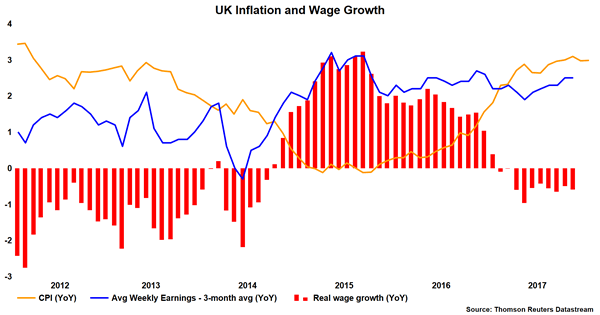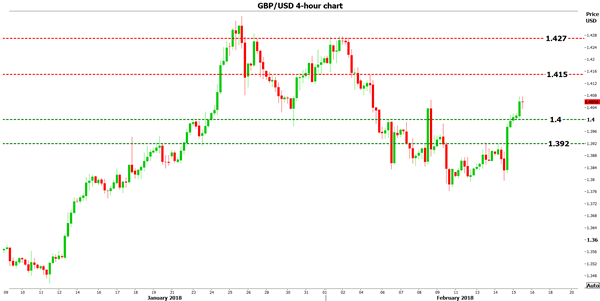UK retail sales for January are due to be released at 0930 GMT on Friday and forecasts point to a rebound in monthly terms following a sharp decline previously. Should the actual prints show that UK consumer spending remains on a decent track despite the squeeze in real incomes, that would be another factor enhancing the case for the Bank of England (BoE) to raise interest rates in May.
In January, UK retail sales are projected to have risen by 0.5% on a monthly basis, after a 1.5% plunge in the preceding month. The core measure – which excludes fuel for automotives – is expected to have increased by 0.6%, following a 1.6% drop in December. In yearly terms, both the headline and the core prints are anticipated to have accelerated notably.
It is critical to note that retail sales have been on a weakening path for over a year now. To a large extent, this has been attributed to the squeeze in real incomes that has occurred ever since the Brexit vote. To explain – UK inflation has accelerated sharply due to the pound’s devaluation, but wage growth has remained almost flat, thereby "squeezing" the real disposable income of UK consumers. This is one of the (many) reasons that have kept BoE policymakers from raising interest rates too much. Higher borrowing costs could weigh further on wages and thus, feed into slower consumption and economic growth.

Still, at its latest policy gathering, the BoE was confident enough to indicate that rates may rise faster and to a greater extent than previously signaled, pushing the implied probability for a rate hike in May to 65%. With expectations for a May action riding high, it will be critical to see whether spending (i.e. retail sales) has remained on a decent track.
Should the retail sales prints meet or exceed their forecasts, that could help the probability for a May hike to climb higher and by extent, support the pound. Sterling/dollar is likely to surge and test the 1.4150 resistance zone, where a potential upside break could open the way for extensions towards the 1.4270 territory, marked by the peaks of February 1.
On the flipside, if sales disappoint relative to expectations, it may be perceived as a signal that the income squeeze is continuing to limit consumption, and it could lower the likelihood for a BoE action in May. Such an outcome may bring the pound under renewed selling interest, with sterling/dollar likely to aim for a test of the psychological 1.4000 area. If sellers manage to overcome that zone, then the 1.3920 hurdle could come into play.

In terms of what the other major gauges of the retail sales printed in the month, the British Retail Consortium (BRC) retail sales monitor held steady at 0.6% year-on-year, while the Visa consumer spending index declined further to -1.2%, also in yearly terms. Both of these gauges suggest that the risks surrounding the retail sales forecasts may be skewed somewhat to the downside, perhaps for slightly softer-than-anticipated prints.











